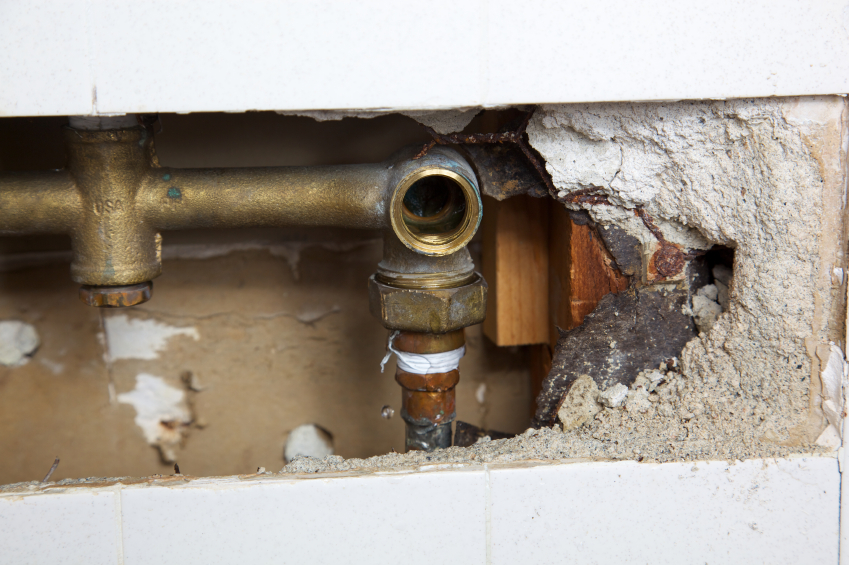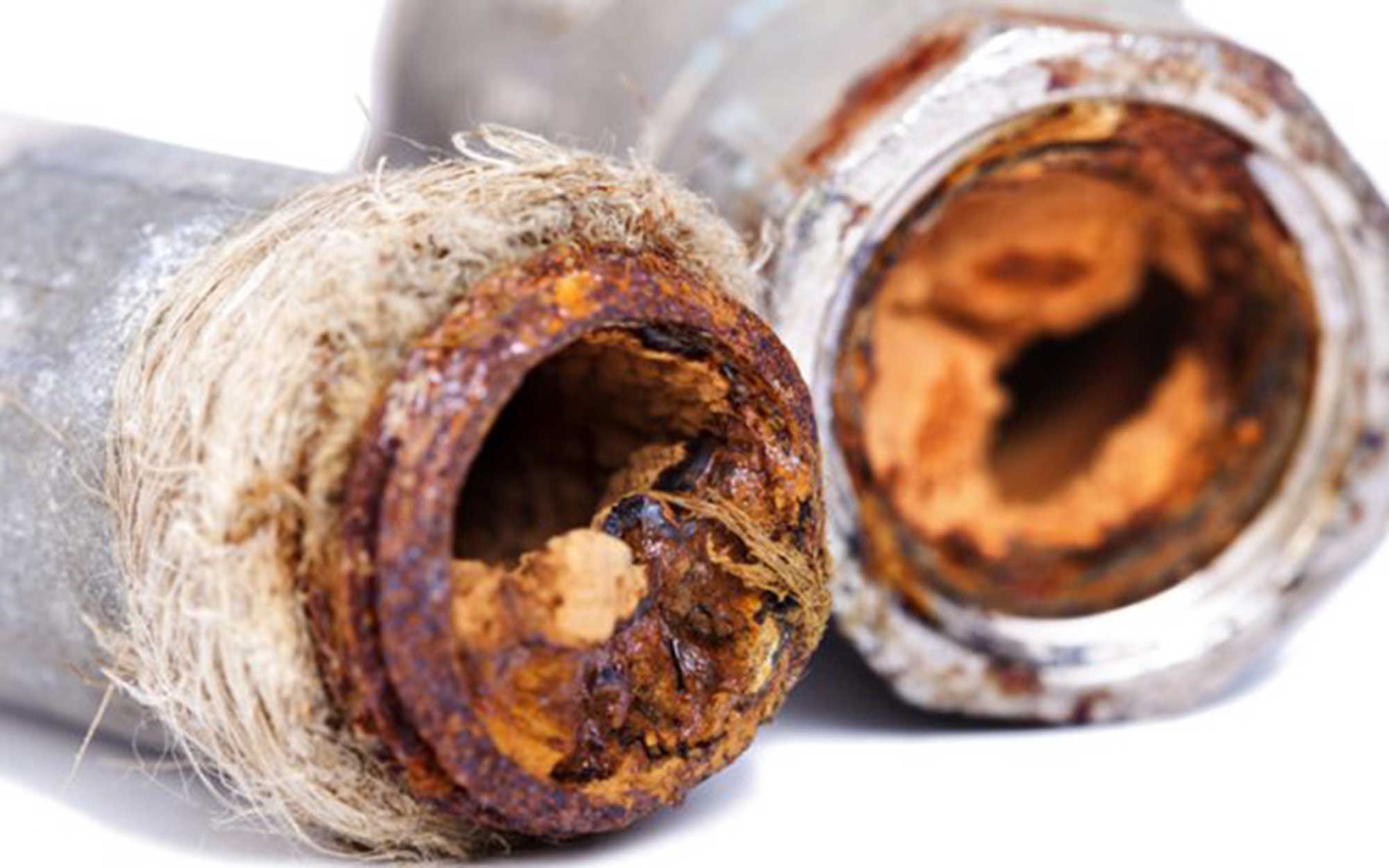We have encountered this article pertaining to Why Do My Plumbing Pipes Make A Knocking Noise directly below on the internet and accepted it made sense to write about it with you on this page.

To detect noisy plumbing, it is very important to determine very first whether the undesirable noises take place on the system's inlet side-in other words, when water is turned on-or on the drainpipe side. Sounds on the inlet side have varied reasons: too much water pressure, worn valve and also tap parts, improperly linked pumps or various other home appliances, improperly put pipeline bolts, as well as plumbing runs having a lot of limited bends or various other limitations. Sounds on the drain side typically stem from poor place or, just like some inlet side sound, a format having limited bends.
Hissing
Hissing sound that occurs when a tap is opened somewhat generally signals extreme water stress. Consult your regional public utility if you think this trouble; it will have the ability to tell you the water pressure in your location and can set up a pressurereducing valve on the inbound water supply pipe if needed.
Thudding
Thudding noise, commonly accompanied by shivering pipelines, when a faucet or appliance valve is shut off is a problem called water hammer. The sound as well as resonance are brought on by the resounding wave of stress in the water, which all of a sudden has no area to go. Occasionally opening a shutoff that releases water promptly into a section of piping having a constraint, elbow joint, or tee fitting can generate the very same problem.
Water hammer can normally be cured by mounting installations called air chambers or shock absorbers in the plumbing to which the issue shutoffs or taps are attached. These gadgets permit the shock wave produced by the halted circulation of water to dissipate airborne they contain, which (unlike water) is compressible.
Older plumbing systems may have brief upright sections of capped pipe behind wall surfaces on faucet competes the same objective; these can eventually loaded with water, reducing or ruining their performance. The cure is to drain pipes the water supply completely by turning off the major supply of water shutoff and also opening up all faucets. Then open the primary supply valve as well as shut the taps individually, beginning with the tap nearest the shutoff and also finishing with the one farthest away.
Babbling or Screeching
Extreme chattering or shrieking that takes place when a valve or tap is turned on, which typically goes away when the fitting is opened completely, signals loose or malfunctioning internal components. The option is to change the shutoff or tap with a brand-new one.
Pumps and home appliances such as cleaning devices as well as dishwashing machines can transfer motor sound to pipes if they are poorly linked. Connect such products to plumbing with plastic or rubber hoses-never rigid pipe-to isolate them.
Various Other Inlet Side Noises
Creaking, squeaking, damaging, snapping, and also tapping normally are caused by the growth or tightening of pipes, normally copper ones supplying hot water. The audios take place as the pipes slide versus loosened fasteners or strike neighboring home framing. You can often determine the place of the trouble if the pipes are exposed; simply adhere to the noise when the pipes are making sounds. More than likely you will discover a loosened pipe hanger or a location where pipes exist so near to floor joists or various other framing items that they clatter against them. Affixing foam pipeline insulation around the pipes at the point of get in touch with need to treat the problem. Make sure bands and hangers are protected and also offer adequate assistance. Where feasible, pipe fasteners ought to be connected to enormous structural elements such as foundation wall surfaces rather than to framing; doing so lessens the transmission of vibrations from plumbing to surface areas that can magnify as well as transfer them. If affixing fasteners to framework is inevitable, cover pipes with insulation or various other durable material where they speak to fasteners, and sandwich the ends of new fasteners in between rubber washing machines when mounting them.
Dealing with plumbing runs that struggle with flow-restricting limited or countless bends is a last resource that needs to be taken on just after seeking advice from a proficient plumbing specialist. Regrettably, this situation is rather typical in older houses that might not have actually been constructed with indoor plumbing or that have seen numerous remodels, particularly by novices.
Drainpipe Sound
On the drainpipe side of plumbing, the chief goals are to remove surfaces that can be struck by dropping or hurrying water and also to insulate pipelines to consist of inescapable noises.
In brand-new construction, bath tubs, shower stalls, bathrooms, as well as wallmounted sinks and basins must be set on or against durable underlayments to lower the transmission of noise with them. Water-saving commodes as well as taps are less noisy than traditional designs; mount them rather than older types even if codes in your area still permit utilizing older components.
Drains that do not run up and down to the cellar or that branch right into horizontal pipe runs supported at floor joists or other mounting existing particularly problematic sound problems. Such pipelines are big enough to emit substantial resonance; they likewise bring considerable quantities of water, which makes the situation worse. In new building and construction, define cast-iron soil pipes (the large pipes that drain commodes) if you can manage them. Their massiveness includes a lot of the noise made by water passing through them. Additionally, prevent directing drainpipes in wall surfaces shown bedrooms and also areas where people collect. Walls containing drains must be soundproofed as was described previously, using dual panels of sound-insulating fiberboard as well as wallboard. Pipelines themselves can be wrapped with unique fiberglass insulation produced the objective; such pipes have an invulnerable plastic skin (sometimes including lead). Outcomes are not constantly satisfying.
WHY IS MY PLUMBING MAKING SO MUCH NOISE?
This noise indeed sounds like someone is banging a hammer against your pipes! It happens when a faucet is opened, allowed to run for a bit, then quickly shut — causing the rushing water to slam against the shut-off valve.
To remedy this, you’ll need to check and refill your air chamber. Air chambers are filled with — you guessed it — air and help absorb the shock of moving water (that comes to a sudden stop). Over time, these chambers can fill with water, making them less effective.
You’ll want to turn off your home’s water supply, then open ALL faucets (from the bathroom sink to outdoor hose bib) to drain your pipes. Then, turn the water back on and hopefully the noise stops! If you’re still hearing the sound, give us a call to examine further.
Whistles
Whistling sounds can be frustrating, as sometimes the source isn’t easily identified. However, if you can pinpoint which faucet or valve that may be the cause, you’ll likely encounter a worn gasket or washer — an easy fix if you replace the worn parts!Whistling sounds from elsewhere can mean a number of things — from high water pressure to mineral deposits. Your best plan of attack here is to give our plumbing experts a call. We’ll be able to determine where the noise is coming from and what the cause may be, then recommend an effective fix!
Cracks or Ticks
Cracking or ticking typically comes from hot water going through cold, copper pipes. This causes the copper to expand resulting in a cracking or ticking sound. Once the pipes stop expanding, the noise should stop as well.
Pro tip: you may want to lower the temperature of your water heater to see if that helps lessen the sound, or wrapping the pipe in insulation can also help muffle the noise.
Bangs
Bangs typically come from water pressure that’s too high. To test for high water pressure, get a pressure gauge and attach it to your faucet. Water pressure should be no higher than 80 psi (pounds per square inch) and also no lower than 40 psi. If you find a number greater than 80 psi, then you’ve found your problem!
Next step is to give us a call in order to install a pressure regulator. Trust us, you don’t want to wait to resolve this issue. Not only is the sound annoying, but high water pressure can be destructive to your home — including damaging certain appliances, like your washer and dishwasher.
Dripping
You might be accustom to the slow quiet drip your kitchen faucet makes. You might have even tuned out your bathroom sink dripping and drabbing all day long — but it’s time to find its cause.
A slow drip could signify a variety of easy to fix issues, such as a worn out O ring, or loose part. And by ignoring the drip, you could be wasting up to 2,000 gallons of water a year! So start conserving water — get it looked at ASAP.
https://www.pwessig.com/blog/2018/december/why-is-my-plumbing-making-so-much-noise-/

I'm certainly very enthusiastic about Why Do My Pipes Make Noises and I really hope you enjoyed reading our page. Loved our write-up? Please share it. Help other people locate it. Thank-you for your time spent reading it.
Immediate care? Call!